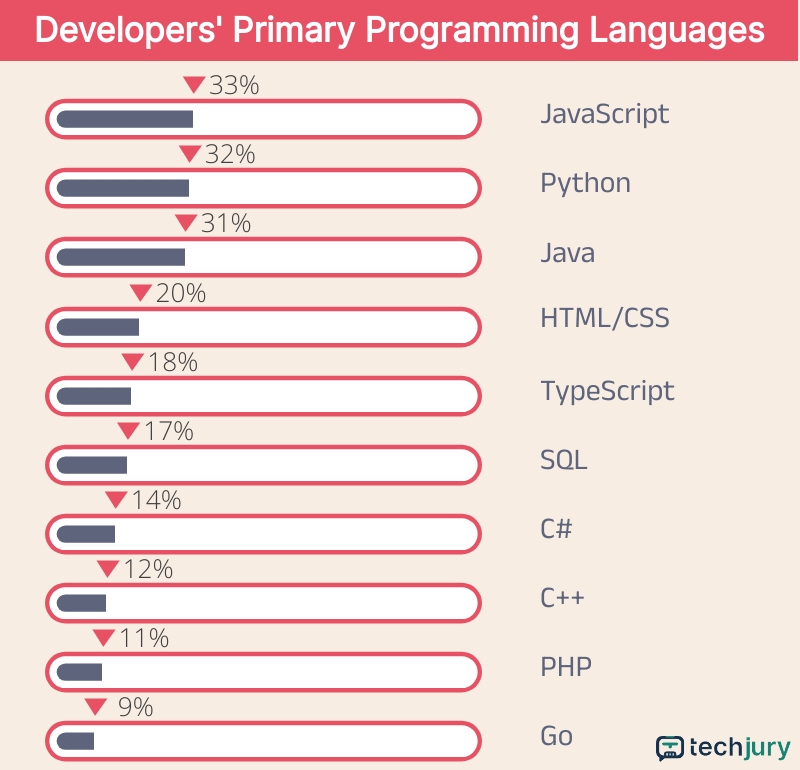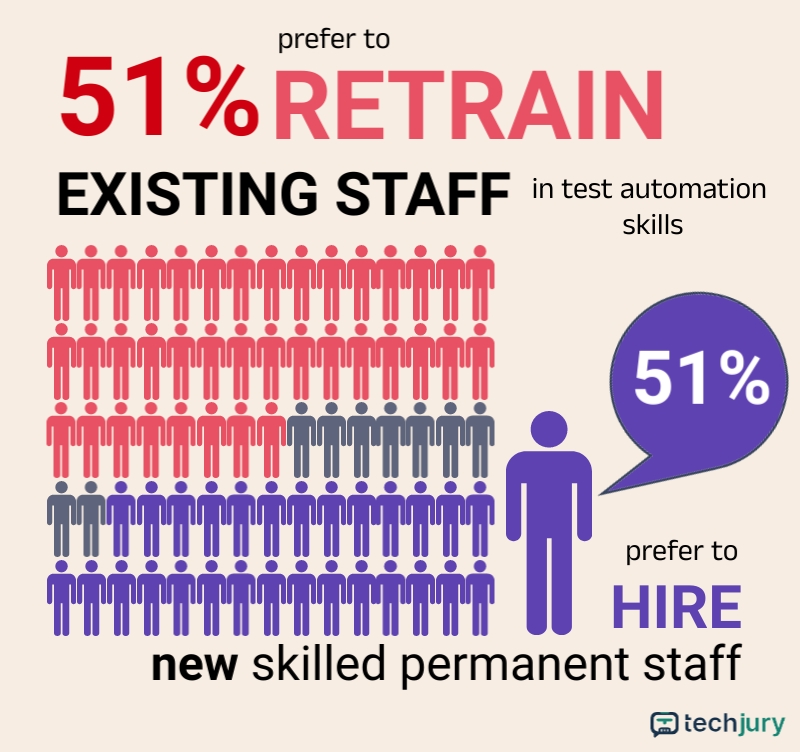

Updated · Feb 11, 2024
Updated · Feb 27, 2024
Florence is a dedicated wordsmith on a mission to make technology-related topics easy-to-understand.... | See full bio
As software continues to be a critical part of businesses and everyday life, the testing phase will constantly evolve to meet the modern digital space.
With the growing demand for tech and innovation, companies focus on developing new applications, resulting in more software to test. Software testing is hovering around $45 billion in 2022 alone.
The market size is only the tip of the iceberg. To get the most out of the program, this article presents the top statistics that show its benefits and trending practices.
|
Editor’s Choice
|
Developers should allot about 20% to 40% of the total development time for testing. Small projects take about 20% of the process. Larger projects, on the other hand, could take much longer, depending on how effectively quality assurance experts and automation testing services can perform their tasks.
Software quality control can be expensive, but it could save companies millions yearly when done efficiently.
See the statistics below to learn more about the software testing market and its current trends:
The software testing’s current value of $45 billion in market size expects to grow by 5% from 2023 to 2032. Factors seek high demands for new software development and testing, such as:
Listed below are the software testing statistics on market size, which are crucial before making informed decisions:
(Global Market Insights)
Performance testing helps you understand your applications' imperfections and optimize their stability, usability, stability, and functioning. This includes functional and non-functional testing.
|
Definition Functional Testing: This type tests the behavior of the software under test. Depending on the client’s requirement, a ‘Requirement Specification’ is used as a guide to test the application. Non-functional Testing: It is developed to assess the readiness of a system as per non-functional parameters. Such parameters are typically not addressed by functional testing. |
The application testing market alone is expected to reach $50 billion by 2032, dedicated to ensuring the products' safety and security.
(DogQ Blog)

Software development is a tricky process that needs tools and strategies to be successful. One of the vital steps in any software project is manual testing.
While automated testing is critical in the development process, it can't replace manual testing altogether. However, there's one disadvantage that most testers hate about manual testing: it demands more time.
Manual testing demands testers spend extra time manually checking every app function. This part takes up more time than running automated assessments, requiring only a fraction of that time.
(DogQ Blog)
Limited timeframes are a challenge software engineers encounter, so most find ways to shorten testing periods.
It was found 35% of companies consider manual testing the most time-consuming activity. This led 30% of software engineers to consider moving to test automation for faster testing times without compromising the production quality.
2023 market research reports that software testing services reached 1,949 businesses in the US, a growth of 1.4% from 2022. This industry can be very demanding, but this 1.5% increase in testing services tells us that this industry is growing.
Take a glimpse at some of the statistics in the software testing industry:
(JetBrains)
There are plenty of programming languages that exist. However, JavaScript ranked as the most commonly used primary programming language.
JavaScript language runs on major browsers, such as:
One advantage of using JavaScript for test automation is the large community that uses this programming language. A vast and active community of developers contributes to open-source tools and frameworks.
Some programming languages developers use are:

(JetBrains)
|
Definition: Jenkins continues the Hudson open-source project under the original creator and towards an open-source future. |
This tool provides faster feedback and reduces the development and testing cycle of the product. Due to its quick integration in testing development, more than half of developers prefer them for CIs.
On the other hand, AppVeyor ranks the lowest, with only 1% of users for CI systems.
(Coding Sans)
Software development became one of the startup industry's biggest challenges. Tech leaders suggested that having the proper engineering process in businesses could lead to higher productivity and customer satisfaction.
This is one way to address customer concerns and ensure that their feedback is of importance.
Human error is inevitable in developing software. However, with the help of test automation, the product is reviewed until it meets the requirements.
Many developers moved to test automation for faster software testing. It usually compares the actual outcome of the product and what changes should be made to meet the expected result.
The following shows how much test automation has impacted software testing.
(Software Testing News)
Statistics showed that companies prefer in-house consultants over contractors, who only got 12%. In comparison, 9% prefer combining in-house and outsourced testers.
In-house developers will have complete control during the development process, allowing them to move from one task to another faster.
(Software Testing News)

Companies' responses to hiring team members for test automation showed that 51% favored retraining existing staff in automation testing skills. Results also show that 38% chose to hire skilled permanent staff.
People who work closely with test automation are preferred to have technical skills, such as coding. A good coder and communicator are attractive in the industry.
(Sealights)
Test automation requires several metrics to provide proper outcomes. This allows developers to see which code is working or not.
Below are the 11 metrics software developers follow when testing.
In 2022, organizations continuously innovated for faster solutions to develop quality software, such as Shareware. There are constant searches for how to produce apps faster to keep up with the advancements.
Here are the latest trends in software testing:
(Software Testing Help, Forbes)
Artificial Intelligence is expected to grow by 37.3% in its usage from 2023 to 2030. The recent improvement with AI and machine learning poses a great opportunity in testing.
Although still in its early stages, AI makes such tedious tasks a lot easier by detecting problems quicker and solving them faster, making it efficient in testing.
(TestingXperts, Software Testing Help)
In a recent survey, 54% of companies are interested in adopting DevOps. DevOps helps reduce the time from development (Dev) to operations (Ops) and shortens the allotted development time so the product can be released immediately to the public.
(LAMBDATEST, Bytebeam)
The Internet of Things (IoT) is a network of devices that focuses on ensuring they can connect, collect, and exchange data. As this increases, the possibility of the use of IoT in testing also increases.
With the emerging Internet of Things (IoT) trend, software testing is shifting toward IoT testing. Over 10% of venture capital funding is related to IoT, bringing billions of startup funding.
(Software Testing Help, Bytebeam)
Automated testing was much faster than manual testing, hence having less development time. Although there is a vast difference between both, test automation is favored by 30% of developers for faster development testing.
Software development and testing have come a long way, from manual tests to automated integrations. Developers nowadays find ways to improve software development through various means, improving the market as a whole.
Companies are looking for ways to help digital nomads be at ease in their daily lives. Software testing and quality assurance should be given more importance and time to ensure the quality of the product before it is made available to the world.
Software testing has four main types: unit testing, integration testing, system testing, and acceptance testing.
Statistical testing uses statistical methods to validate the software and determine the program's reliability.
Artificial intelligence will have much greater coverage and a broader scope to check to make the program foolproof and free from human errors.
Your email address will not be published.
Updated · Feb 11, 2024
Updated · Feb 11, 2024
Updated · Feb 08, 2024
Updated · Feb 05, 2024



